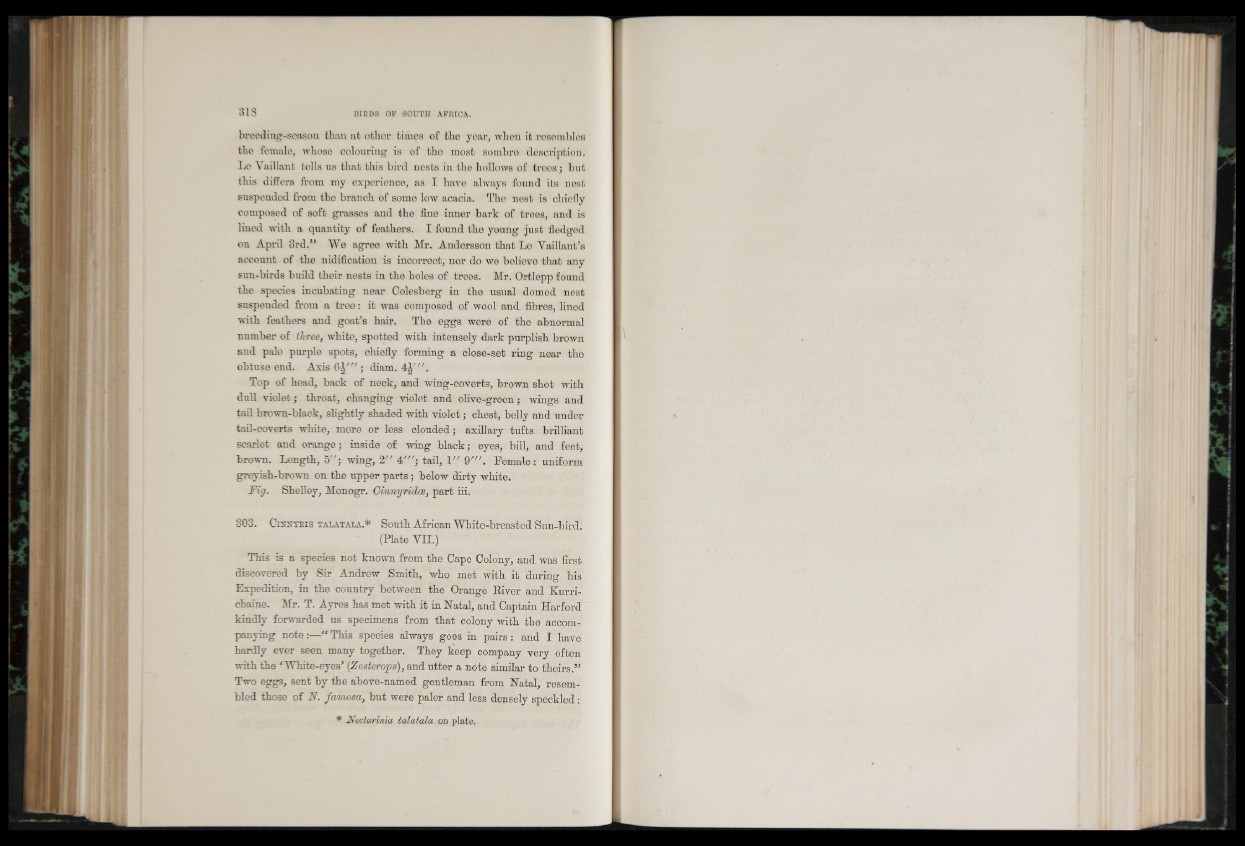
breoding'-season than at otlior timos of tho yew*, when it resembles
the female, whoso colouring is of the most sombre description.
Lo Vu.illant tolls us that this bird uosts in the hollows of troos ; but
this differs from my experience, as I liavo always found its nost
suspended from the branch of some low acacia. The nest is chiefly
composed of soft grasses and the fine inner bark of trees, and is
lined with a quantity of feathers. I found the young just fledged
on April Srd.” We agree with Mr. Andersson that Le Vaillant’s
account of the nidification is incorrect, nor do we believe that any
sun-birds build their nests in the holes of trees. Mr. Ortlepp found
the species incubating near Colesberg in the usual domed nest
suspended from a tree: it was composed of wool and fibres, lined
with feathers and goat’s hair. The eggs were of the abnormal
number of three, white, spotted with intensely dark purplish brown
and pale purple spots, chiefly forming a close-set ring near the
obtuse end. Axis 6J '" ; diam. 4A"/.
Top of head, back of neck, and wing-coverts, brown shot with
dull violet; throat, changing violet and olive-green; wings and
tail brown-black, slightly shaded with violet; chest, belly and under
tail-coverts white, more or less clouded; axillary tufts brilliant
scarlet and orange; inside of wing black; eyes, bill, and feet,
brown. Length, 5"; wing, 2" 4"'; tail, 1" 9 "'. Female: uniform
greyish-brown on the upper parts; below dirty white.
Fig. Shelley, Monogr. Cinnyridce, part iii.
3 0 3 . C ix x t r is ta ia ta la .* South African White-breasted Sun-bird.
(Plate VH.)
This is a species not known from the Cape Colony, and was first
discovered by Sir Andrew Smith, who met with it during his
Expedition, in the country between the Orange River and Kurri-
chaine. Mr. T. Ayres has met with it in Natal, and Captain Harford
kindly forwarded us specimens from that colony with the accom-
panying note:—“ This species always goes in pairs : and I have
hardly ever seen many together. They keep company very often
with the ‘White-eyes’ (Zosterops), and utter a note similar to theirs.”
Two eggs, sent by the above-named gentleman from Natal, resembled
those of N. fomosa, but were paler and less densely speckled :
* Nectarinia talatala on plate.